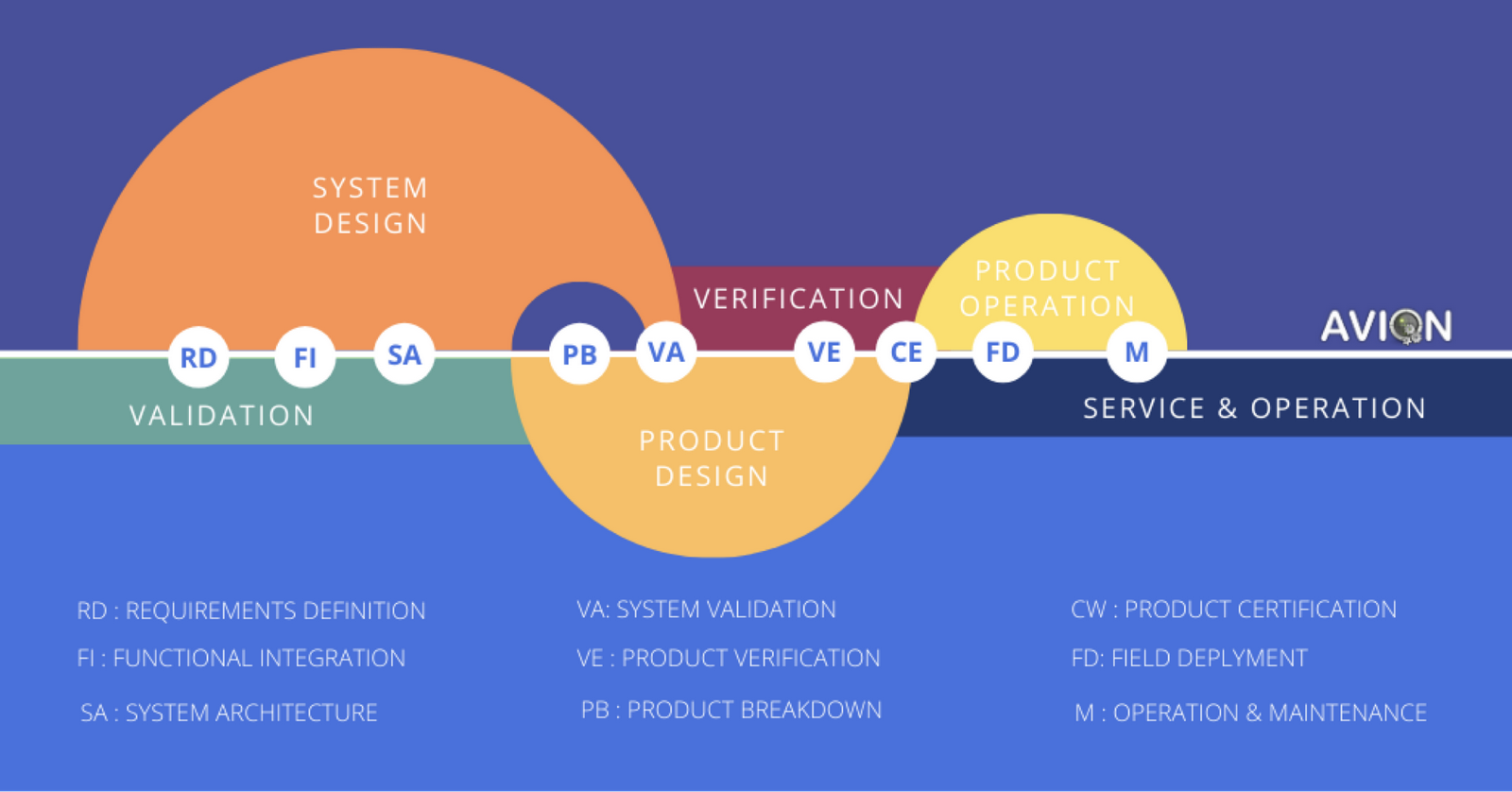Delivering complex programmes is a challenging task.
Systems Engineering (SE) aims to make this challenge a manageable affair. It is a multidisciplinary and integrative approach for realisation, delivery, operation and management of complex engineered systems.
A system is defined as collective of individual components interacting in a such a way that the collective provides a sustained human experience and desired capability greater than the total function and utility of its individual components.
The sustained human experience is a notion for desired functionality and performance, where as the capability is a notion of collective availability, reliability, safety and other desired time dependent characteristics.
Systems Engineering focuses on elicitation, development and fulfilment of stakeholder goals through development of an efficient lifecycle process and governance model to manage risks arising out of complexity, uncertainty and change.
Its an iterative process and needs to be intentionally developed to the needs of each 'individual' project.
Why is Systems Engineering so important today?
Design, development and delivery of complex and safety critical systems is challenging, especially when it is difficult to validate such characteristics by direct tests - for example as in aviation or space industries. For space industry it is impossible to verify that the launch system is capable of delivering a payload on a distant planet by test.
Systems engineering provides a means of logically and analytically reducing the risks to such programmes.
In the recent days, transdisciplinary and multimodal systems with high demands for safety and reliability have become a means to gain competitive market advantage.
In this case, developing a system that outperforms the competition but at the same time minimising the iterative and costly nature of the development programme is possible using right application of Systems Engineering methods and tools.
Case Study : Systems Engineering at SpaceX
SpaceX is a great example of the structured and innovative application of Systems Engineering processes to solve a complex problem in a cost effective manner and how innovation can be delivered though 'integration' rather than traditional means of 'exploration and discovery'. SpaceX looks at Systems Engineering as a discipline established to protect the enormous investment of large scale, complex system development by anticipating and solving integration problems ahead of time. Their emphasis on fast iterative testing using Systems Engineering principles is key to their success
Systems Engineering is a framework of supporting processes.
Systems Engineering (SE) process models vary based on industry, application and context. Standards such as ARP4754 promote the V-Cycle layout and standards such as ISO15288 promote a more management centric process layout.
The Systems Engineering process framework consists of 4 key process areas and 25 processes altogether.
Enterprise processes address the need for the enterprise.
Project processes address the need for the project control.
Agreement processes are useful in the system acquisition and procurement scenarios.
The technical processes are more encompassing and provide an end to end workstream which begins with the stakeholder requirements and ends with the processes for system disposal.
The ISO 15288 framework
ISO15288 standard provides a Systems Engineering process framework its sub-processes.
Following tables identifies the Systems Engineering elements addressed by each process group.
(Ref: ISO IEC 15288:2015 Systems and software engineering - System life cycle processes)
Systems Engineers deliver systems engineering.
A systems engineer is a multi-skilled technical individual with strong understanding of the operating and design context of the systems and excellent project engineering skills.
A systems engineer focuses on delivery an optimised system design which constantly assessing and validating the system configuration against the design and operational end goals for the system.
Enterprise processes address the need for the enterprise whereas the project processes address the need for the project control. Though the systems engineers lead the systems engineering activities, the entire project team is involved in the systems engineering process.
A systems engineer is responsible for development of Concepts of Operations and resulting system architecture, interfaces, requirements, validation and verification activities amongst other project management activities.

Systems engineering and project management teams share common processes in stakeholder management, risk management, configuration management and scheduling.
Ref : NASA Systems Engineering Handbook
Requirements are building blocks in Systems Engineering.
Requirements have a pivotal role in planning, managing and delivering the Systems Engineering processes. Requirements act as fundamental building blocks which can create different 'viewpoints' of the system in context.
Stakeholder needs are often very high level requirements which need to be developed further into system, subsystem and component requirements. Requirement traceability ensures that there is a clear link between stakeholder requirements and other low level (system, subsystem and component) requirements. Those requirements which are not traceable to stakeholder requirements but are often necessary for developing an operational system may be referred as 'derived' requirements. These exist as a result of some internal constraint unrelated to stakeholder requirements.
Requirements are created and then taken through a predefined lifecycle. At each stage the maturity of the design and system configuration is checked through the validation and verification process.
Validation and Verification of requirements is a continuous process.
Validation and Verification from two key phases within the lifecycle of any requirement. Validation precedes the verification. Validation ensures that 'a right system is being developed' and verification ensures that 'a system is developed right'.
Validation activities are defined and agreed across the programme stakeholders and a selection of validation activities is then performed against each requirement. The results of the validation activities are then summarised in the a 'validation statement' against each requirement. The validation statement provides a justification of correctness, completeness and quality of the requirement.
Verification activities identified against each requirement aim to assess if the 'as built' system configuration meets the requirements. Verification process provides objective evidence that can be used in the product certification process. Verification process proves that the product meets required standards and norms of safety, reliability and other functional and performance requirements.
Key Systems Engineering Standards
Much of the science in the systems engineering domain is well established - however application of these standards is still challenging. We have strong expertise in developing best practice processes suitable for diverse industry and project landscapes.

ASE ARP 4754 - Guidelines for Development of Civil Aircraft and Systems Learn more

Guidelines and Methods for Conducting the Safety Assessment Process on Civil Airborne Systems and Equipment Learn more

Systems and software engineering — System life cycle processes Learn more

Quality management — Guidelines for configuration management Learn more

Systems and software engineering — Life cycle processes — Requirements engineering Learn more

Systems and software engineering — Software life cycle processes Learn more
(Note - Above list of standards is only for guidance purpose and does not represent a complete list of applicable standards)
A simple representation of the Systems Engineering lifecycle is as shown below. Its shows the relative overlap between the System Design, Product Design / Detailed Design and System Operation phases with a linear transition from the validation, verification to service and operation phases.




